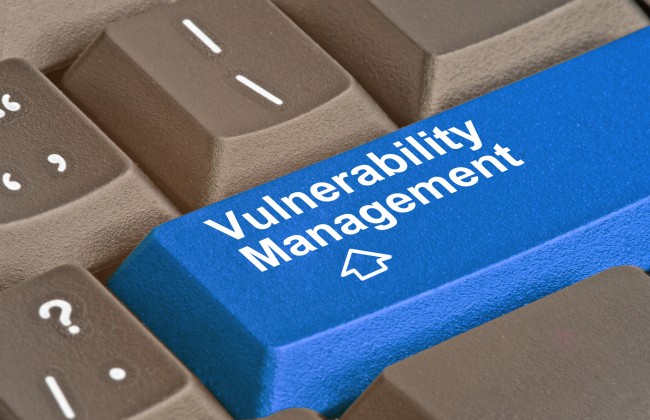In the ever-connected digital world, exposure is no longer optional. Every business system that touches the internet becomes a potential target.
Attackers search relentlessly for weak spots. When left unguarded, these flaws can unravel an entire infrastructure. That is where vulnerability management plays an indispensable role.
What Is Vulnerability Management?
Vulnerability management is a continuous, structured process of identifying, evaluating, treating, and reporting security flaws within an organization’s digital assets. It does not begin and end with one scan. It works as a cycle – discover, assess, prioritize, remediate, and verify.
Its core purpose is prevention. The process reduces exposure to threats before attackers can exploit them. In practical terms, it keeps systems hardened and defenses current.
Why Every Business Faces Risk
Every connected device, application, or network holds potential weak spots. Software may contain bugs. Configuration errors may expose sensitive ports. Legacy systems may no longer receive security patches. All of these combine to create an ever-expanding attack surface.
Cybercriminals no longer rely on sophisticated techniques to break in. They often succeed by using known vulnerabilities that organizations have failed to address.
Regardless of industry or size, no company remains immune. Small businesses often assume attackers target only large firms. That assumption leads to neglect, which hackers exploit with ease.
Benefits of a Structured Vulnerability Management Process
A formal vulnerability management process strengthens overall security posture. More than just identifying issues, it enables proactive defense.
1. Prevention of Data Breaches
Most data breaches trace back to exploited vulnerabilities. Patching those known issues eliminates the path of least resistance for attackers. It turns opportunistic strikes into dead ends. Regular scans and patching can mean the difference between safety and disaster.
2. Cost Reduction
Incidents caused by unpatched flaws are expensive. The average cost of a data breach exceeds $4 million globally. But beyond money, reputation damage, legal fines, and operational downtime add further pain. Vulnerability management lowers the likelihood of such events, and thereby reduces long-term risk and cost.
3. Compliance With Regulations
Laws like GDPR, HIPAA, PCI-DSS, and SOX require businesses to secure personal and financial data. Regular vulnerability assessments are either mandatory or strongly advised. Failure to comply can result in legal consequences. A managed program ensures that systems remain audit-ready.
4. Improved System Uptime
Security flaws can lead to outages, especially when exploited. Vulnerability management protects availability by reducing these disruptions. Regular maintenance keeps critical services running and stable, even under attack.
The Key Stages of Effective Vulnerability Management

A robust process must be continuous, not reactive. Every stage plays a role in minimizing risk.
1. Asset Discovery
Security begins with knowing what exists. Any unknown system cannot be protected. All hardware, software, services, and cloud resources must be cataloged. Without this inventory, even the best tools fail.
Discovery tools help map devices, operating systems, installed applications, open ports, and connected endpoints. As systems evolve, continuous discovery ensures no new asset is left out.
2. Vulnerability Scanning
After assets are identified, the next step is to detect weaknesses. Scanners check systems against known issues—outdated software versions, misconfigurations, missing patches, and exposed services.
The scan itself must be frequent and automated. Threats emerge daily, and scanning must keep up. Both authenticated and unauthenticated scans serve different purposes. The first looks deeper; the second checks external exposure.
3. Risk Prioritization
Not every detected flaw carries equal risk. Some lead straight to critical data; others are low-impact nuisances. Effective management focuses on the threats that matter most.
Prioritization relies on several factors – exploit availability, severity scores (like CVSS), asset importance, and business impact. Context matters. A public-facing server with a known remote code execution vulnerability demands immediate attention. A minor flaw on a test machine can wait.
Modern tools now use threat intelligence to rank risk. They identify which flaws attackers actively exploit. This brings sharper focus and faster response.
4. Remediation and Mitigation
Once prioritized, flaws must be addressed. That often means applying patches, reconfiguring services, disabling unused ports, or isolating systems. The goal is to remove the attack vector without affecting operations.
Some flaws may not be patchable. In such cases, mitigation is the next best step. That might involve network segmentation, firewall rules, or access control updates to reduce exposure.
Every fix must be tested. An untested patch can break systems. Change control and rollback plans are essential.
5. Verification and Reporting
Fixing issues is not enough – confirmation is required. Re-scanning validates that patches worked and vulnerabilities are gone.
Reporting provides accountability. Stakeholders need visibility into risk levels, remediation timelines, and progress. Reports also support audit trails for compliance purposes.
The Role of Automation in Modern Vulnerability Management
Manual processes cannot scale with modern networks. Automation brings speed, consistency, and efficiency.
Automated scanners detect flaws in real-time. Integrated patch management systems push updates quickly. AI-based engines prioritize threats using contextual business data. Dashboards track remediation progress across teams.
Integration with IT service management (ITSM) platforms also helps turn vulnerabilities into actionable tickets. This links cybersecurity with operations.
Automation reduces human error. It ensures no step is forgotten and no issue is ignored. Without it, large organizations fall behind, and risk grows quietly.
Challenges Businesses Face Without It
Without a structured vulnerability management program, risks compound. Flaws remain unaddressed. Attackers gain time and opportunity.
Lack of visibility is common. Teams may not know what systems exist, what software runs, or where gaps lie. In such blind spots, hackers thrive.
Manual tracking of patches often fails. It is time-consuming and error-prone. Missed updates leave doors open.
Response times slow down. Without a plan, businesses respond after damage is done rather than before. Recovery costs mount quickly.
Even compliant companies may fall out of alignment if assessments are not maintained. One missed patch could lead to data loss and regulatory trouble.
Conclusion
Leaving systems unchecked is no longer a viable option. Threats arrive daily. Attackers exploit known flaws faster than ever. Businesses that lack visibility into their infrastructure or delay patching expose themselves to unnecessary risks.
Vulnerability management is not optional. It is an essential discipline that transforms how companies think about digital defense. It provides the clarity needed to act. It shifts security from reaction to preparation.
In a world where threats move faster than ever, staying ahead means knowing every weak point – and fixing it before someone else does.
Also Read:
